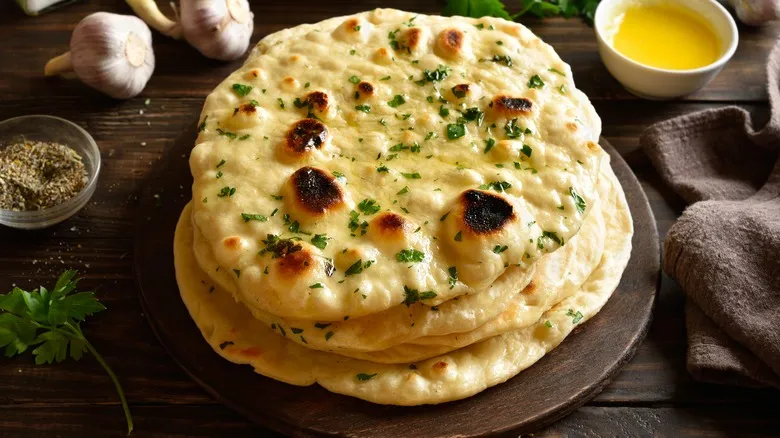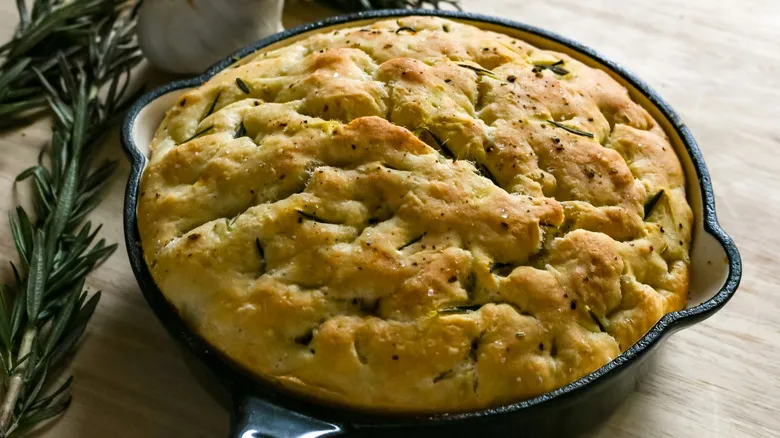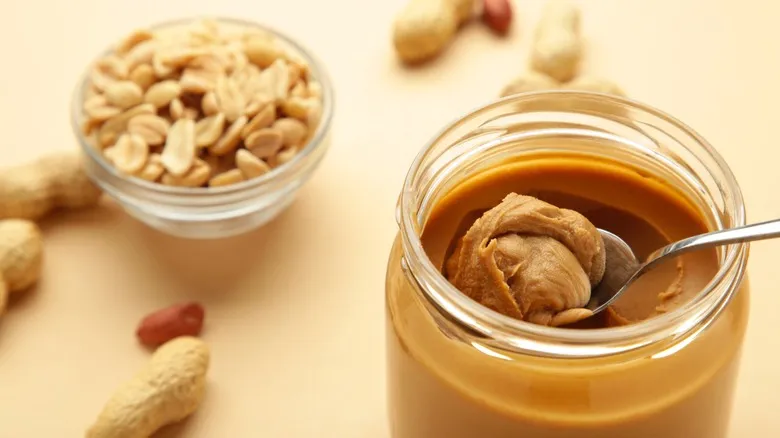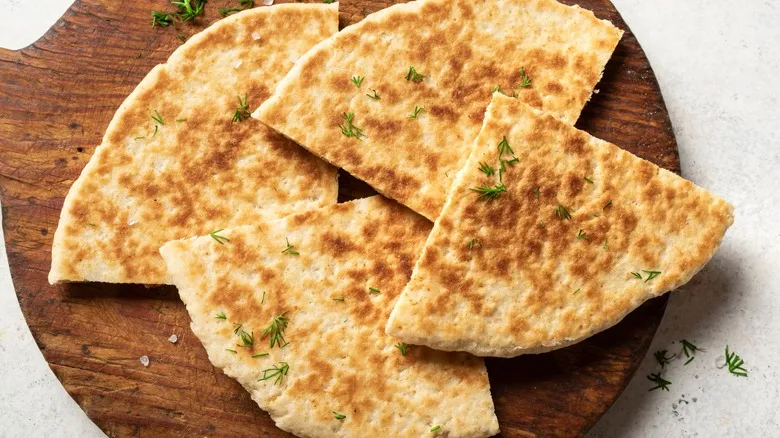What is pita bread?

While bread itself has been around for tens of thousands of years, pita bread is relatively younger, likely emerging around 2500 B.C. in the ancient Middle East. In this area, bakers mixed flour, water, salt, and yeast to create a dough, which they shaped into flat circles and baked in wood-fired ovens. As the dough cooked, the water evaporated, producing steam that formed a hollow pocket within the finished bread. This empty space is what gives pita bread its name, as "pita" translates to "paunch" or "belly" in Greek.
After cooling, the bread was sliced open and filled with a variety of ingredients. In the age-old tradition of stuffing tasty fillings into bread, many cultures filled pitas with meats, vegetables, falafel, and more. The Greeks also utilized pitas as a base for "plakous," an early form of pizza topped with herbs and melted cheese.
Pita bread has proven to be enduring, making its way to the United States in the 1960s with Harry Toufayan, the son of an Egyptian baker. Since then, it has gained immense popularity in America, rivaling its status in the Levant. The handy pita pocket is ideal for creating everything from grilled cheese sandwiches to decadent desserts filled with Nutella, fruit, and brie.
What is naan bread?

While naan may have been around for a considerable time, the earliest documented mention of it appears in the diary of a Persian poet from around 1300 A.D. Given that the Persian Empire encompassed a large portion of Asia, Mesopotamia, Egypt, and parts of Europe, this reference does not pinpoint its exact origin. Nevertheless, food historians suggest that naan likely made its way to the South Asian continent from Central Asia, facilitated by the extensive trade routes established during the Persian Empire's expansion.
Upon its arrival in India, naan quickly became a sought-after delicacy. This might seem unusual to those of us who casually prepare grilled cheese with naan from Trader Joe's, but in the 16th century, it was primarily a dish reserved for royalty. Even today, chapatis and roti made from finely milled atta flour are more commonly found in South Asian households, with naan typically reserved for special occasions. This could be attributed to the somewhat intricate process involved in making naan.
In addition to flour, water, salt, and yeast, naan dough often incorporates yogurt or sour cream, ghee (clarified butter), and various mix-ins such as goat meat or dried fruits like raisins and pistachios. The dough is then baked in a cylindrical clay or metal oven known as a tandoor. The baker slaps rounds of naan dough against the inner walls of the tandoor, where the intense heat keeps it in place until fully cooked. Naan can be enjoyed on its own or used as a vessel for kebab meat and other hot dishes.
Different doughs for different folks

While both pita bread and naan are types of flatbreads, they have several notable differences. For starters, pita bread predates naan by a significant margin, with evidence suggesting it is over 2,500 years older. This age difference likely contributes to the simpler ingredient list of pita bread, which typically includes just water, salt, flour from wild grains, and wild yeast—ingredients that were easily accessible to cultures that had not yet developed animal husbandry or discovered yogurt and clarified butter.
In addition to their age, these flatbreads also have different geographical origins. Naan is believed to have originated in Central Asia, whereas pita bread emerged in the ancient Middle East. Pita bread was a fundamental part of the daily diet for the Levantine peoples, while naan was often reserved for the upper classes, special occasions, or festivals. As a result, naan dough frequently incorporates savory and sweet additions, while pita dough is generally kept plain.
The most striking distinction between these two delicious breads is the iconic pita pocket. Naan, with its baking process, results in a chewy round with soft, stretchy interiors. In contrast, when you cut open a pita, you find a hollow center perfect for stuffing with a variety of fillings, from falafel and spiced gyro meat to peanut butter and marshmallow fluff. Additionally, pita bread tends to be a bit lighter, as it contains less fat compared to the ingredients that give naan its tender texture.
Hey, we're all flatbreads, here

Despite their differences, pita bread and naan are both flatbreads that originated in the warm, central regions of Eurasia. Traditionally, they are cooked in extremely hot, wood-fired ovens and hold significant cultural value. Each type of flatbread is often paired with hot or messy dishes to help keep hands clean. Moreover, they share the same four basic ingredients found in most bread.
Both pita bread and naan have maintained their popularity over the years. Pita bread made its first appearance in the United States in the 1960s, while English historian William Tooke introduced naan to the Western world in the early 19th century. Although pita bread was created first and naan arrived in North America later, both flatbreads have been enjoyed for centuries and continue to be beloved today.
In the U.S., nearly every grocery store stocks at least two varieties of pita bread and naan. Pita bread is typically available in white flour and whole grain options, with pita chips becoming increasingly popular in recent decades. Similarly, you can usually find both white and multigrain naan, as well as garlic-infused varieties and mini versions that are perfect for dipping in hummus.
Recommended

How To Successfully Substitute Lemon Juice In Baking

The Case For Making Focaccia In Your Cast Iron

Alton Brown Has The Ultimate, Mess-Free Tip For Flouring A Pan When Baking

Spread Peanut Butter On Your Baked Salmon And Thank Us Later
Next up

